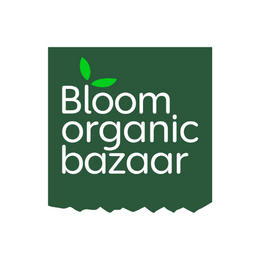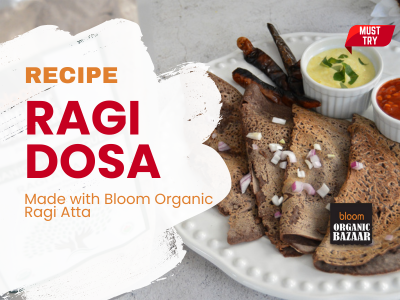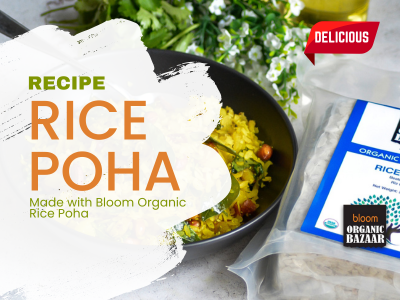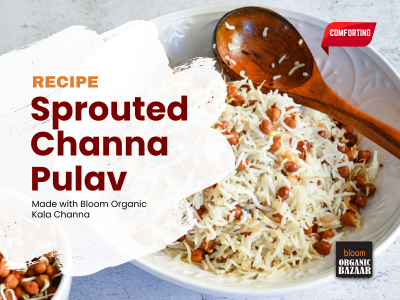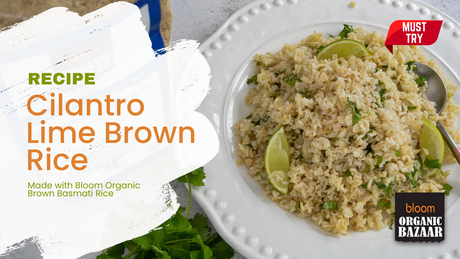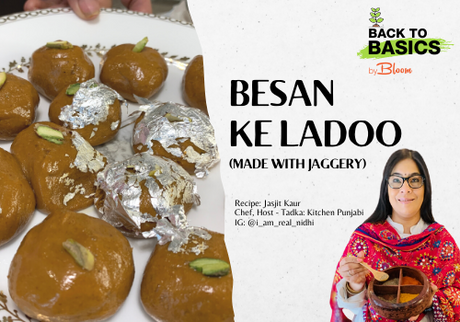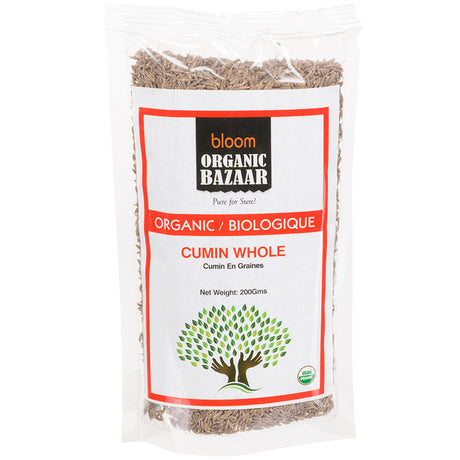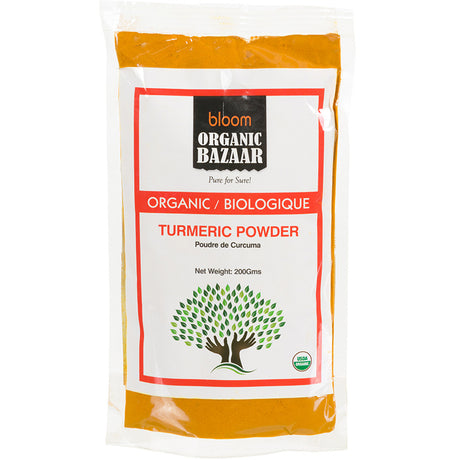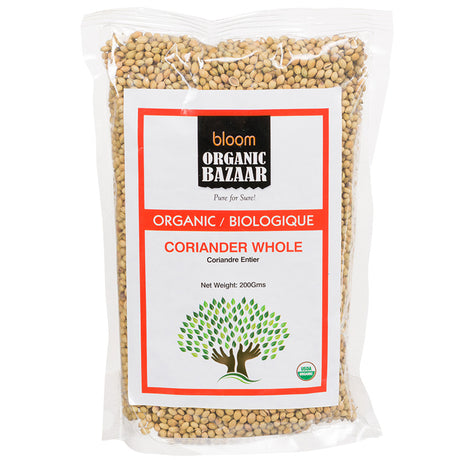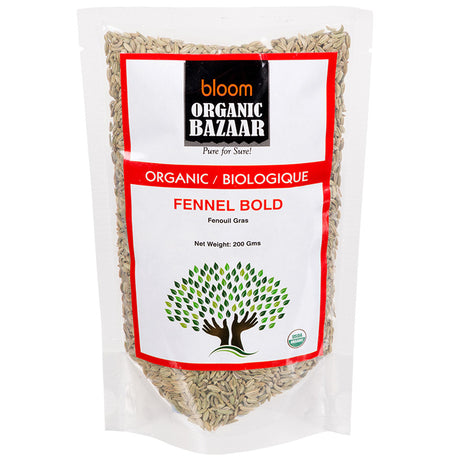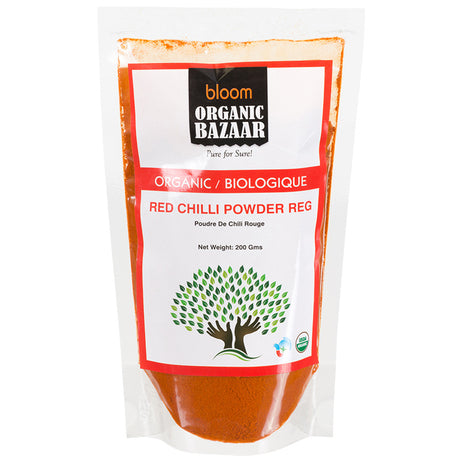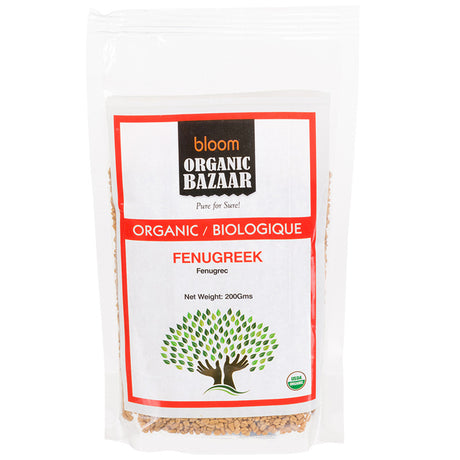
The story of flour, or atta, goes back several thousand years in human history. Ever since the early settled man (or, most probably, woman!) started grinding those wild grains into powder, the humble atta has been a staple food, lending its goodness to countless number of dishes. Flour, or atta as it is known in South Asia, is present in every kitchen in the world in some form or the other. So, if it’s such a universal and common product, why are we making a big fuss about our Bloom Whole Wheat Organic Atta?
There are any number of reasons to toast and celebrate Bloom Whole Wheat atta. But let’s start from the beginning – where and how it is grown.
Sharbati Wheat
Sharbati wheat is gaining world-wide recognition today because of its unique origins and its above average nutritional value. Grown in the Central Indian state of Madhya Pradesh, known for its vast forests and tiger reserves, Sharbati is native to just one of its 22 districts, named Sehore.
A unique set of environmental factors make sharbati wheat a stalk above all other wheats. The regions where Sharbati wheat is grown stays dry throughout the year, except during the rainy season. Due to the absence of regular irrigation, the crops depend entirely on rainwater to survive. A soil rich in potash, air that is dry and pure rainwater create a wheat variety that is miles ahead of its most common cousins in nutritional value, taste and texture.
Sharbati Nutritional Advantage
The three unique factors – a potash-rich soil, dry air, and rainwater – lend Sharbati atta certain qualities that are hard to match in the regular atta. For example, it’s a fact that Sharbati atta contains 1% to 2% higher concentration of protein, making it slightly harder, but far more nourishing.
Sharbati atta is packed with essential nutrients and generous amounts of vitamin B and E, that aid in the growth of red blood cells, boost energy levels, good eyesight, good digestion and improve cardiovascular health. It is also rich in catalytic elements, mineral salts, calcium, magnesium, potassium, manganese, zinc, iodine and copper. Bloom’s whole wheat flour contains wheat germ, endosperm and bran while all the refined varieties contain only the endosperm.
Chemical Bleaching of Atta
Many popular brands of wheat flour are white, and there is a reason for it – they are bleached. The common bleaching agents used are acetone peroxide, benzoyl peroxide, nitrogen dioxide or chlorine.
While stripping the wheat of its colour, these chemicals are also said to increase the gluten content in some cases.
Giant food companies in their hurry to get the product to the market, take the quick and easy way by bleaching with chemicals. While it does have the advantage of extending the flour’s shelf life, it also deprives it of some essential nutrients. A by-product of the chemical bleaching is alloxan, that is better known for its use on lab animals to test certain diabetic drugs!
Excepting the UK and Ireland, oxidative chemicals such as chlorine and chlorine oxide are no longer used in the rest of Europe because of their possible harmful effect on human populations.
Desiccation of Wheat Crop
Desiccation is a process that farmers employ extensively in North America, especially in the grain producing Western Canadian provinces. Before the wheat is ready to be harvested, a heavy dose of herbicide is sprayed on them, that in turn suck all moisture from the grain making it harder. It makes harvesting a little easier, but the residues left behind has its own health implications. This practice is more common when the environs are unusually wet during harvest season.
One of the most common chemicals used in this process is glysophate which is recognized as the world’s most popular weed killer. Glysophate is used before planting to protect crops from weeds and often before harvesting to dry out the crop. It’s not just wheat that gets a dose of this chemical coating, other crops like oats, barley, beans etc. are treated the same way.
The increased use of glysophate in recent years has raised concerns among health activists and researchers alike. After all, with so much of the chemical going into the grains, that are staple to human diet, how can you completely rule out some of that stuff getting into the human body? Certain chemicals, like those in pesticides, will destroy beneficial gut bacteria if ingested in large quantities.
A recent report published by researchers at the University of Washington on the health implications of weed killers concluded that it significantly increased the risk of non-Hodgkin lymphoma (NHL), a cancer of the immune system by as much as 41%.
The manufacturers of these herbicides have vigorously defended their products, pointing to the stance of several health agencies around the world that permit its usage. The dispute is currently winding its way through the US court system following a ruling favouring a groundskeeper who sued saying his cancer was caused by years of working with the chemical.
Why wait for the final conclusion which may be years away, when you can eliminate the risk today by switching to an atta that has not had the ‘benefit’ of desiccation?
The Safer Bloom Alternative
Due to the strict organic method, from the farm to the warehouse, that Bloom follows in getting its atta brand ready for the market, it’s certainly safer. Bloom Organic Sharbati Atta is not prepared using the quick and easy method, but it takes the longer harder route to keep it away from chemical contamination. Sharbati wheat is left out in the sun and the natural oxygen does the job of turning it into white. The mark of a good sharbati atta is that it won’t be pure white but is slightly yellowish because of this chemicals-free natural process of bleaching.
The off-white unbleached Atta gets duller as it ages. It’s not enough that you choose an unbleached product. The flour could be treated with other kinds of chemicals. Always check the label if you are particular about sticking to the organic option. The unbleached organic atta takes longer to produce and may be slightly more expensive.
Is Bloom Organic Sharbati Atta Tastier?
Like beauty being in the eye of the beholder, taste can lie in the palate of the eater. But there is somewhat of a consensus that along with all the organic benefits by way of health, the rotis or chapathis made from this flour is tastier. The sharbati wheat grains have lower water content and it is harder. It takes more water to make into a dough, resulting in softer and fluffier rotis or chapathis.
Bloom Organic Sharbati Atta for Life
Atta is staple to the South Asian diet. Because it’s consumed each and every day over a whole lifetime, even the slightest advantages can turn into huge beneficial outcomes in the long run. When adults switch to the healthier alternative, the younger generation automatically benefit as the habit stays with them for life.
The Bloom Guarantee
We search around the globe for the finest wholesome organic products which are grown in regions traditionally famous for their distinctive flavour, quality, and taste. We promise the following:
-
Direct Procurement from The Farmer
2. Complete Traceability to The Farm of Origin
3. 100% Testing and Certification of Every Product
4. Ethical and Fair-Trade Practices
5. No Chemicals or Pesticides
6. No Synthetic Fertilizers
7. No Additives or Preservatives
8. No Irradiation
9. Tastes Better
